
Design With Integrated Pest Management
Association of Zoological Horticulture 2005 Conference Proceedings
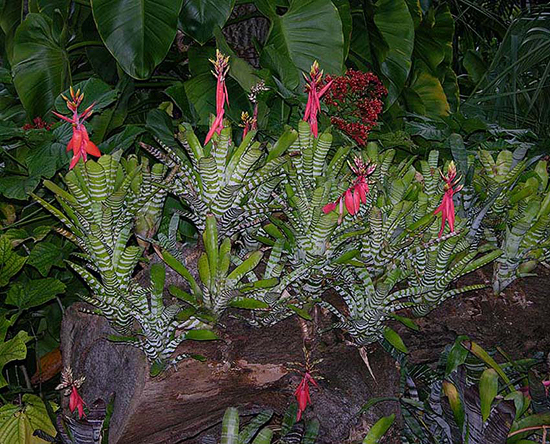
Parrot Jungle Island
A Zoological Theme Park built upon IPM and Plant Health Care practices:
Featuring the ongoing development of an onsite mosquito larvicide program
The main theme of this paper is to show that the establishment of Integrated Pest Management (IPM) and Plant Health Care (PHC) programs are not only viable for successful horticulture and necessary to protect the environment, but when incorporated into the design and construction, and ongoing maintenance of a zoological and botanical theme park, these programs are very cost effective.
Parrot Jungle Island opened as a brand new, built from scratch, zoological theme park in the month of June 2003. This park was the relocated former Parrot Jungle & Gardens that had been in business since 1936 in a different location, about 15 miles from the new park. The new venue is similar in size, 18 acres (16 acres of land and 2 acres of water), and in concept, a botanical and zoological theme park. The main differences are the efficiency of design and utilization of space. The show venues are larger, more trails are under cover, and the park can easily accommodate thousands more visitors in a day. There are also more animal exhibits and much more space for landscaping and botanical collections.
The IPM and PHC programs that are currently in place at this new park were developed at the former facility over a period of 15 years and resulted in an insect control program that used a minimum of pesticides (none restricted). Some biological controls had been introduced with good results i.e. Nosema for Lubber Grasshopper control, Bacillus thuringiensis for chewing insects and mosquito control. The success of the IPM program was in part based upon another program, Plant Health Care (PHC) which utilized strict control of irrigation, the extensive use of park produced compost, constant mulching, and various cultivation techniques.
These environmental methods that have evolved at PJI have enabled the park to become a member of two United States Environmental Protection Agency (EPA) programs. The first is the GreenScapes landscape program which promotes environmentally sound large scale landscape development. The second is the Pesticide Environmental Stewardship Program. This program requires a business or an organization to develop strategies that mitigate the use of pesticides and other chemicals utilized in agriculture and pest control industries. The two strategies that PJI has instituted for 2005 are the control of the Geiger tortoise beetle, Physonota calochroma floridensis on Orange Geiger trees, Cordia sebestena without pesticides and the other strategy for mosquito larvae control.
The establishment of IPM and PHC programs can be shown to be value-added. The American Heritage Dictionary of the English Language defines value-added as, “Of or relating to the estimated value that is added to a product or material at each stage of its manufacture of distribution”. In other words, the implementation of these programs can save money. This paper give some examples of how significant savings can be incurred from the time of planning and development of a project, during the construction phase, and onward to the regular maintenance and continuing evolution of the finished project.
PJI is built upon an 86 acre spoil island that was created when the ship channels were dug for the adjacent Port of Miami in the early 1900’s. The top 10 feet of this island consists of sand with varying amounts of shell or limestone fragments. The first 4 feet contains an organic component of up to 13% that had accumulated over time on the island through the natural decomposition processes that accompany the growth of vegetation or naturally occurring ground cover. The new park’s site was approximately 8 feet above sea level. Since this island is classified as a flood zone, the ground floor of buildings is mandated to be built at 12 feet above sea level. This necessitated the importation of almost 27,000 tons of structural fill to be placed under all of the park’s structures. Before the structural fill was placed, the existing fill was removed (on the entire 16 acre landward site) down to 4 feet above the water table and stockpiled.
Originally, the plan had been to take the excess fill off the island and replace it with “landscape soil”. The health of the soil, its structure and characteristics, its inhabitants, the micro flora and fauna, are critical to successful horticulture. I was able to put forth several arguments to utilize the excess fill as the landscape soil medium. Those arguments were; the island never seemed to flood in a heavy rain therefore it had excellent drainage characteristics. The excellent drainage also meant good soil aeration. Many different species of trees and palms were successfully growing in this soil already; no need to change it. Another key factor in utilizing the existing soil was when a different soil type is layered onto another soil type, a perched water table can be created that will not allow water percolation to take place until the upper layer of soil is totally saturated. This can be deadly to many species of plants. Finally, the cost savings of not exchanging the landscape soil was tremendous. Utilizing the original soil has been a horticultural success and saved the project a significant amount of money.
Before site work and construction was started on the new PJI site there were about 150 trees growing there. I conducted a site analysis and determined to save as many trees as possible by moving them off the site to a holding area and then back on as construction allowed. Of the original 150 trees, 80 were demolished due to poor trunk structure, extensive trunk damage or rot, or they were in the invasive exotics category and their landscape use was prohibited. The 70 trees that remained were successfully relocated offsite and then back on as site work allowed; a handful of trees were actually moved three times due to changes in site or building design. Now three years since these trees were moved a final time we have had 100% success with transplanting the original trees. The cost of moving and maintaining the full-size trees vs. transporting smaller trees (due to size restrictions of moving them down a public thoroughfare) that have been pruned extensively and waiting years for a new canopy to grow has been very cost effective and productive in terms of creating a tree canopy for PJI as rapidly as possibly. This effort was definitely a good example of value added.
The use of compost and mulch is a cornerstone of our IPM and PHC program. Originally the former park was a licensed composting facility that composted 100% of the park’s organic waste with the exception of food waste. This compost was then returned to the park as top soil and plant nursery soil media. During the last two years of the former parks operation compost was stockpiled with the purpose of utilizing it at the new park to help establish the new landscaping. About 400 yards of this natural resource was trucked to the PJI site and used as a soil conditioner and top-dressing for the newly installed trees.
The compost was used to inoculate the soil with beneficial microorganisms and mycorrhiza (fungi that have a symbiotic relationship with roots) and to further add organic material to the existing soil to aid in moisture retention. The micro flora and fauna that occurs in the compost function as a constant nutrient source to the plants but in small enough amounts that there is not a large “burst” of nitrogen into the plants that would merely serve to attract plant pathogenic insects (or would be wasted by leaching out or through volatilization). This is a critical part of reducing our reliance on pesticides and fertilizer.
Mulch derived from arborist tree trimming operations is used throughout the park as a ground cover. This mulch has several purposes; it has excellent aesthetic qualities, it holds down weeds, and it insulates the ground thereby reducing soil water evaporation. If the upper horizon of the soil is cool and moist there will be more beneficial organisms and tree root hairs in this zone. Mulch continues to decompose further adding organic material and nutrients to the soil. It also encourages earthworms to live in this zone that will improve soil aeration and further add more nutrients to the soil.
Compost and mulch were utilized to secure the sides of berms to prevent erosion allowing the eventual vegetative cover to do the work of artificial stabilizing materials. This application alone saved PJI approximately $60,000 by not having to install ground cloth and “rip-rap” (large rocks used to stabilize slopes) on over 600 feet of shoreline.
The use of compost and mulch in the construction of the park for slope stabilization, topdressing, and irrigation reduction produced significant cost savings. The ongoing use of these resources as a soil conditioner and the savings realized by reduced irrigation is another example of value-added.
A lawn and the underlying soil that is walked upon at times by hundreds of people gets compacted and is difficult to keep in good condition. There are two lawn areas at PJI; one is in Flamingo Lake and the other is our Picnic Lawn. This presents a number of issues. Flamingo Lake is a one acre landscaped exhibit featuring a large lake with fish surrounded by lawn and trees with a flock of 65 breeding Flamingos residing within. At issue is keeping the lawn healthy through a method that is safe for all the resident animals. The exhibit is in a basin and all fertilizers or pesticides used on the lawn will eventually run-off into the lake. The Picnic Lawn does not have animals but it is next to the children’s area and the public has constant access.
A brief note on the basin shape of Flamingo Lake; this design allows the flamingos to stay outside in the exhibit during a hurricane. Significant wind protection is provided by the surrounding buildings and raised covered trail but the shape of the exhibit itself allows the wind to pass above the flamingos leaving them safe and unharmed. This was the case at the original park during Hurricane Andrew in 1992 and at PJI during Hurricane Katrina.
The issue of keeping the lawns green, disease free, and to be able to deal with soil compaction problems was resolved by utilizing what grows naturally on Watson Island and environs. There are many species of grasses and herbaceous plants that grow freely (some may call them weeds) in heavily trafficked areas and do quite well under this kind of pressure; some are native most are exotic species. Many of these plants are natural nitrogen fixers and look quite green. We have allowed these plants to grow into the lawns with excellent results. The ability to grow a lawn that does not require spraying with pesticides or fungicides and will not die under heavy foot traffic is possible; another example of value-added by removing a monoculture and replacing it with a more natural system shared by many plant species.
The selective pruning of leaves and inflorescences on many plants i.e. bananas, palms, Heliconias, etc. has been an important component of the IPM and PHC programs at PJI for the past decade. This is proven way to mitigate or eliminate insect pressure. One of the 2005 strategies that PJI has undertaken with the EPA PESP program is the hand-picking of leaves on Geiger trees that have been infested with the larvae or eggs of the Geiger Tortoise Beatle. This experiment is only half way through its year-long test run but it is so far proving that control by hand is a more efficient, cost effective, and environmentally sound method of controlling these leaf eating insects.The other PESP strategy that has been implemented at PJI is the onsite control of mosquito larvae. I have been responsible for the control of mosquitoes at both parks for 30 years. During that time aerial spraying or fogging has been the method of control with varying results. It is always hazardous spraying a pesticide into the air when there are animals permanently on exhibit. If one is very careful not to spray in certain areas because of exhibits or windy conditions than very inadequate control is achieved. There is also the issue of phytotoxicity. In a garden where there are many species of plants in various stages of growth, blanket use of a chemical can cause much burning on new plant growth. Finally, the loss of beneficial or nontarget insects due to the constant spraying that is necessary for mosquito control, is a loss of a very important environmental resource. Insect predators and insect polleninators are critical components in Integrated Pest Management and Plant Health Care programs. Without natural controls, we can only resort to chemical or other exotic means of control at great expense both environmentally and from a budget perspective.
Aerial spraying for mosquitoes at Parrot Jungle Island, or any other facility, has many issues associated with blanket spraying. The location of PJI near the ocean exposes the park to much more wind. The direction of the spray is difficult to control thereby exposing animals on exhibit, humans, and the plant collection to spray drift. It is also the last major use of a pesticide in the park and has been an issue with me in regards to our IPM program for many years. How would it be possible to eliminate mosquitoes in the park? This is a very important consideration when thinking about the comfort of our guests, animals, and employees. There is also the specter of diseases vectored by these insects. Animal collections have to be very concerned with West Nile Virus, the various forms of Encephalitis, the different types of Malaria etc.
The mosquito larvae control strategy, and the means and methods developed to pursue it, evolved over a period of months. With up to 45 different species of mosquitoes in South Florida it would be necessary to learn to identify the species that actually occurred onsite in order to control them. I attended a three day mosquito larvae identification course at the University of Florida where I learned the morphology of the larvae and how to use a key for identification down to species. A method of collection was developed and refined a number of times along with a protocol for testing the biochemicals and documenting the results.
I was able to get a professor from the University of Florida Medical Entomology Laboratory, Dr. George O’Meara to make a site visit to give me an idea of how mosquito control could be achieved at the park. After we walked through the entire facility, he made the observation that the majority of mosquitoes on the site, were from the site, and not blowing in from outside areas. The task would be to identify the areas inside the park where breeding was taking place. Bromeliads, as do many other species of plants have structures that hold water. These are called phytotelmata and are often important to the plant for providing water and nutrients. Since PJI has a bromeliad collection that numbers in the thousands of plants, I thought to begin there. The problem in the past had been method of application and phytoxicity. I had burned many bromeliads a number of years ago testing a certain product. I had also noticed that the Bacillus thuringiensis israeliensis (Bti) product that we sometimes used didn’t always seem to work. I decided to test as many different genera and species of bromeliads as possible. At the time I decided on five different mosquito larvicides that were nontoxic to mammals, birds, and fish. Another product for testing was eventually added to this program; a second, more refined monomolecular film. These products are:
- VectoLex CG (Bsph) from Valent BioSciences Corp.
- VectoBac CG (Bti) from Valent BioSciences Corp.
- Arosurf MSF from Goldschmidt Chemical Corp.
- Agnique MMF from Cognis Agrosolutions
- Altosid SBG from Zoecon
- Garlic Oil (this has not yet been purchased as of this writing)
Both Valent BioSciences Corporation and Cognis Agrosolutions donated their products to be tested and were very helpful with practical advice on means and methods of mosquito larvae control.
Early this spring, I started the sampling program once a week on a certain number of bromeliad beds. There was a learning curve on where and how to collect the larvae and then of course learning to distinguish the different species and instars for identification. I have two high school interns assisting me every Saturday with the sampling. The species of mosquito larvae that we were commonly finding in the park were Culex quinquefaciatus and Aedes aegypti, both exotic species. The only native we found regularly was Wyeomia vanduzeii. At this point as we did most of the year, we (PJI employees) were fogging the park on a daily basis for mosquitoes.
Within a month, I began to realize that bromeliads were possibly only a minor contributor to our mosquito problem. Since Miami-Dade county requires rain water to be maintained on the property where it falls; we had installed about 20 storm drains within the park boundaries during the initial construction. Inside these drains are 80 to 90 square surface feet of water; depending on if it is a storm drain or a well and vault. I devised a method to sample the water inside and found that certain drains had literally thousands of larvae inside them. These were placed on a sampling schedule of once a week. Any larvae identification issues were resolved with the assistance of Dr. O’Meara. I then began to treat and document the bromeliads and storm drains with the selected biochemicals. There were also other areas within the park that produced larvae; roof tops, rain gutters, the island that our Flamingos used for nesting, and animal water containers. These other breeding areas were addressed and removed as possible breeding sites.
I am monitoring our Everglades aquatic exhibit very closely for two other genera of mosquitoes, Mansonia and Coquillettidia. The larvae of these exotic species do not come to the surface to breath; they actually attach their breathing siphons onto the roots of certain species of aquatic plants to get oxygen. Most larvicides are ineffectual to control these larvae. Plant species control may be more appropriate. PJI employees regularly pull different plant species out of the water so I can inspect the roots for larvae. There is also a genus of mosquito, Deinocerites, which is endemic to the holes that are dug down to the water table that the native Blue land crab, Cardisoma guanhumi inhabits. This crab is found along the water’s edge that our park borders on. Although Nepenthes species are not grown at PJI because of our climate, these Pitcher plants have been documented as mosquito larvae habitats. It would be interesting to duplicate the mosquito larvae control study on this group of plants since they are grown in many greenhouses.
This program has so far revealed as many questions as answers. At this point, we (two high school interns and I) have worked with two different biochemicals and two different monomolecular films. Some chemicals are definitely proving to be phytotoxic to bromeliads. Certain chemicals are definitely specific as to the species of mosquitoes they control. The longevity and efficacy of those chemicals, and the locations where larvae are found can be affected by sunlight, temperature, quality of water, movement of water, and rain. The size and the water capacity of a bromeliad phytotelmata does not seem to be an issue either as to where larvae will breed. It sometimes appears that the different species of mosquito will replace another after one species has been controlled. But one definite result is showing up already; that is effective mosquito control. We are now going weeks without fogging the park. This is a definite plus for the environment and once procedures are in place to utilize larvicides in the storm drains and bromeliads, the program will be another value-added aspect of the IPM and PHC programs. In the early stages of this program, I was able to apply for and receive a one year grant from the Center for Agricultural Partnerships which allowed me to purchase a microscope, supplies and equipment, and some of the biochemicals for the project. Also within the grant is money for the printing of a brochure on the results of this program that will be given to local residents to teach them about environmentally safe and effective mosquito larvae control. What is being learned at PJI about IPM and mosquito control will directly apply to residents and municipalities of South Florida. This type of program will certainly not eliminate mosquitoes that blow into an area from a great distance but it will certainly reduce a significant percentage of them. The protocol being developed for this program will also apply to mosquito control in theme parks, zoos, and botanical gardens around the world. This paper has shown through the previous examples that IPM and PHC is a viable way to approach site design and landscape planning. The ongoing horticultural maintenance of a facility and the environmentally benign control of insect pests will not only benefit from these programs but the aspect of being value-added is an approach that will win over many more decision making directors, owners, and architects.
Jeff Shimonski
Director of Horticulture
Parrot Jungle Island
September 2005



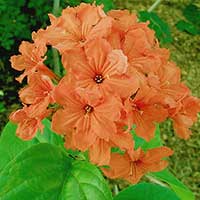
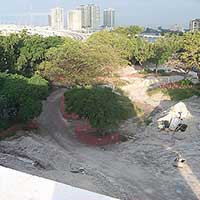
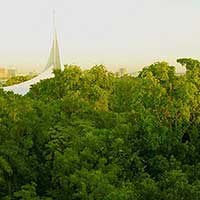
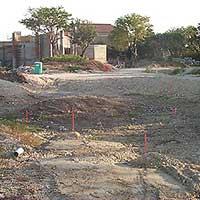
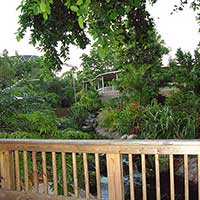
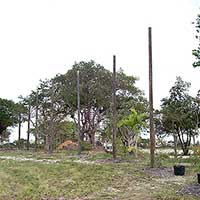
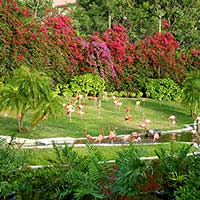
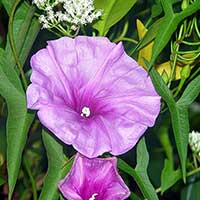
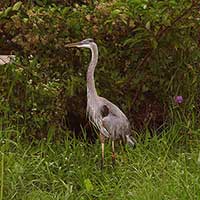
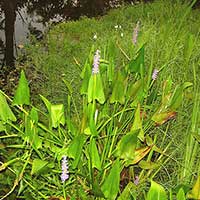
 About Theme Parks, Zoos & Tropical Design
About Theme Parks, Zoos & Tropical Design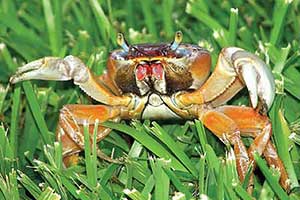 Integrated Pest Management in a Zoological Theme Park, Wing Beats the Journal of the American Mosquito Association
Integrated Pest Management in a Zoological Theme Park, Wing Beats the Journal of the American Mosquito Association The Environmental Lawn
The Environmental Lawn Design with Integrated Pest Management
Design with Integrated Pest Management Creating Islands in Aquatic Ecosystems
Creating Islands in Aquatic Ecosystems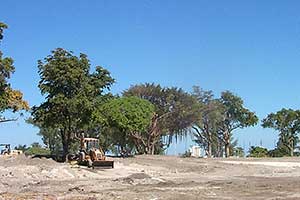 Building a New Jungle - Contouring the Site and Creating a Tree Canopy
Building a New Jungle - Contouring the Site and Creating a Tree Canopy Watson Island - Remaking History
Watson Island - Remaking History The Gardens at Parrot Jungle Island, The First Year
The Gardens at Parrot Jungle Island, The First Year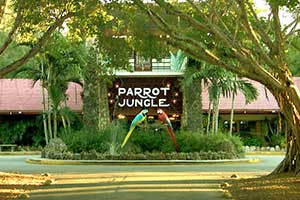 Parrot Jungle & Gardens
Parrot Jungle & Gardens